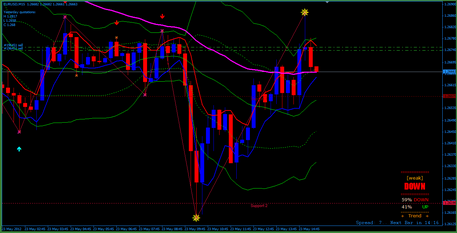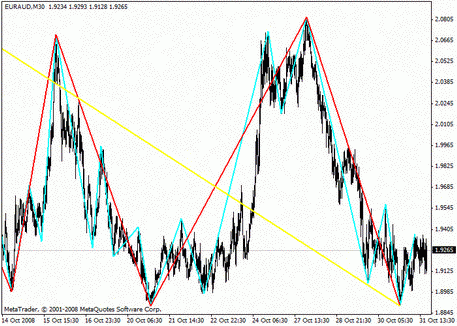
Trend Forex Strategy
Friday, 28 July 2017 07:57
Trading on the trend is the most popular type of trading on the Forex market. Many traders consider it the most profitable and safe one, regarding the profit to risk ratio. Trend strategies involve trading at certain times when there is a trend on the asset price chart.
The trend appears when the market has a big difference between the levels of supply and demand. If there is supply, an increasing trend is formed. If there is demand, it will create a downward trend.
According to statistics, the trend is present on the market no more than in 30% of the total trading time. Usually, the price moves within a certain range, without rapid growth or decline.
This type of trading strategies is based on the inertia of the trend. If there are conditions that can change the value of the asset, traders continue holding the open trades. For example, if an uptrend begins to roll back, bulls will continue to buy with the expectation of further growth in value. The turn of the trend is often preceded by the period of the flat.
Sequence of Actions
Despite the variety of trend strategies, it’s possible to describe a certain sequence of actions, which is suited to most of them.
- Search for a global trend on the older time frames (D1, H4). At this stage, you need each new price peak to be higher than the previous one. When using the moving averages, it’s necessary to make sure the candles of the graph are placed on top of it.
- Search for rollbacks. The beginning of the reversal is determined by the points of intersection of the price with the moving average in the direction opposite to the trend.
- The end of rollbacks. The end of a reversal should be searched at the younger time frames (M15, M30, H1). At this stage, the indicators of the oscillator type are used. For example, applying MACD, you look for the moments of bullish or bearish divergences, using stochastic, you look for the areas of oversold and overbought assets.
- Transaction opening, setting the Take Profit and Stop Loss orders. As a rule, the Stop Loss is placed no less than in 15-20 pips from the current value. If you set the Stop Loss too close, the probability that it will trigger by the short-term fluctuations increases, which leads to losses. The Take Profit level is set 3-5 times higher than the Stop Loss, depending on the strength of your deposit.
- Follow the transaction. To react quickly to the price fluctuations, traders set trailing stops that follow local minimums of the asset price. Lows can be found using the method of fractals, moving averages, or oscillators. The latter is installed on the lower time frames. Bollinger bands can also be used to support the positions. For an upward trend, the Stop Loss points are located on the lower band, for the descending trend - on the top one.
Features of Trading on a Trend

The first task of the trader is to determine the trend. For this purpose, many technical tools are used, such as moving averages, trend lines, etc. However, it’s worth remembering that technical indicators reflect the state of the market in the recent past. The situation at the moment may differ from the indications of the instruments, so the forecasts based on indicators cannot have a 100% probability.
Given the delay in signals, trade has a certain degree of risk. Nevertheless, the probability of making a profit from the trend strategies is much higher than within trade against the trend. In the latter case, the entire success of the transaction depends on the most accurate determination of the turning points of the price on the chart.
Following the rules of risk management, traders can earn hundreds of pips of profit. In this case, the drawdown obtained after an unsuccessful entry into the market can be compensated by a single winning transaction.
Particular attention should be paid to a time frame. The easiest way is to search for the trend on the longer periods, then switching to the shorter ones. It’s worth closely monitoring the behavior of the trend at different time frames, to avoid mistakes. For example, an uptrend may be displayed on the daily chart, but if you switch to the hourly chart, there will be a short-term downward trend in this section. In this case, don’t open a deal for sale, because trading will be not with the trend at the time of the price level correction. It’s better to wait for the end of the correction and to open an extended position in the growing direction.
Share
Related articles
- Previous article: MetaTrader 4 and MetaTrader 5 Trading Terminals
- Next article: Trend Oscillators

 English
English
 русский
русский



